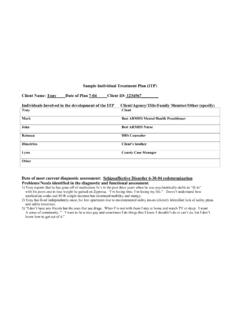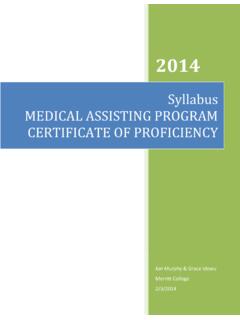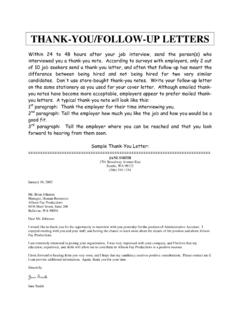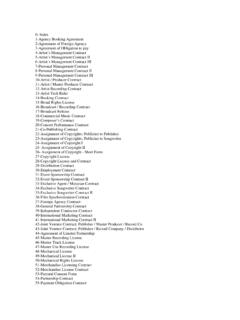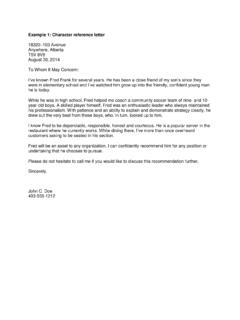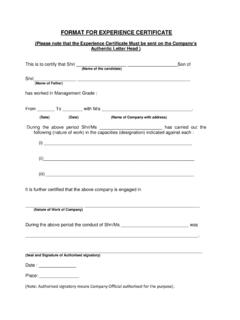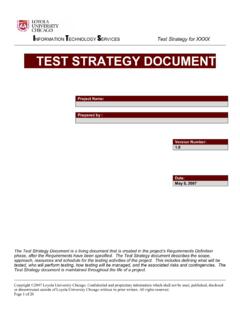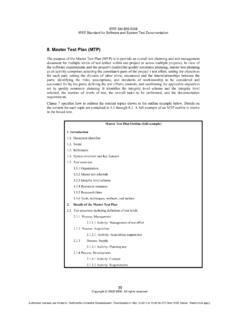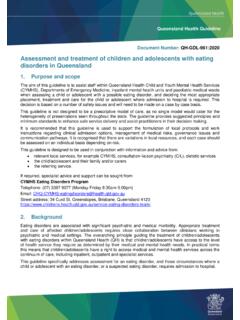Transcription of Written Case Presentation Student A. Sample Grand Canyon ...
1 Running head: Written CASE Presentation 1 Written Case Presentation Student A. Sample Grand Canyon University: ABC-123 January 1, 2012 Written CASE Presentation 2 Written Case Presentation In critical care nursing, close attention must be paid to the patient status post cardiothoracic surgery in order to prevent the onset of complications and to ensure outcomes are being met. The nature of the procedure and the patient s past medical history play important roles in the postoperative recovery course of the patient, and can set the stage for complications to occur.
2 The purpose of this paper is to examine a patient undergoing cardiac surgery with respect to review of subjective and objective data, determination of nursing diagnoses, formation of outcomes with interventions, evaluation of the outcomes, and Presentation of three research questions that can be identified based on the patient s scenario. Subjective Data , an 81-year-old Caucasian male, was admitted to the Emergency Room at Banner Good Samaritan Medical Center with the complaint of progressively worsening exertional shortness of breath for the last 2 weeks.
3 He states that his shortness of breath has been relieved temporarily by rest, and also notes he has had bilateral extremity swelling develop over the past week. He also states that he has had to dramatically reduce his activity level over the past week due to the progressing shortness of breath and lower extremity swelling and that his urinary pattern has decreased. He denies chest pain, palpitations, orthopnea, cough, fever, or chills. The patient is currently on the Progressive Care (telemetry) Unit status post aortic valve replacement, left-sided maze procedure, and excision and removal of left atrial thrombus on 2/2; he is currently postoperative day 6.
4 The patient s past medical history includes hypertension, coronary artery disease status post stent placement to Left Anterior Descending artery and Right Coronary Artery in 2008, hyperlipidemia, moderate aortic stenosis, sleep apnea (on CPAP at night), and benign prostatic hypertrophy. His past surgical history in addition to the stent placement also Written CASE Presentation 3 includes back and shoulder surgeries approximately 30 years ago. Socially, the patient denies consuming alcohol or illicit drug use. He previously smoked one pack of cigarettes per day for approximately 35 years and quit 3 years ago; he currently chews tobacco approximately 3 times daily.
5 Family history is contributory, and the patient denies allergies to food or medications. The review of symptoms yields positive findings for shortness of breath with exertion, generalized fatigue, and changes in weight gain based on bilateral lower extremity swelling. All other systems are negative for abnormalities. Objective Data Vital signs: oral temperature degrees Celsius, noninvasive blood pressure 136/73 via right arm, heart rate 60 bpm and noted to be in sinus rhythm, oxygen saturations 97% on room air, respirations 18 bpm and nonlabored.
6 Patient is awake, alert and oriented to self, place, and time. Equal bilateral weakness noted in upper and lower extremities, otherwise neurologically intact. Heart rate normal sinus rhythm, heart sounds S1, S2 with an estimated grade II systolic murmur auscultated. Lungs clear in upper lobes and diminished in bases bilaterally, equal expansion noted; postoperative chest tube incision sites have gauze dressings clean, dry, and intact. Negative for use of accessory muscles or clubbing; capillary refill within normal limits. Midline sternal incision has silver gauze dressing noted to be clean, dry, and intact.
7 Other than surgical incisions noted, remaining skin is intact and pink. Bowel sounds noted in all quadrants, negative for pain or guarding. Patient is voiding adequate amounts of clear yellow urine without difficulty. Last bowel movement noted this morning, without diarrhea or melena. Diagnostic values include the following: WBC , Hemoglobin and Hematocrit , Platelets 193, Sodium 140, Potassium , Creatinine (decreased from ), INR , Albumin , Magnesium , BNP 330 (decreased from 1054). Morning chest radiograph shows bilateral Written CASE Presentation 4 atelectasis in lower bases with mildly enlarged cardiac silhouette.
8 Post-operative transesophageal echocardiogram showed an increase in ejection fraction from 25% to 35%, confirming the presence of systolic heart failure. Current medications include simvastatin, fish oil, fluoxetine, nicotine patch, vitamin C, multivitamin, docusate, enoxaparin, furosemide, potassium, aspirin, metoprolol, amiodarone, and warfarin. Nursing Diagnoses The first problem concerns the patient s activity intolerance related to his generalized weakness and imbalance between oxygen supply and demand as evidenced by shortness of breath with exertion and fatigue.
9 The second problem concerns the patient s inappropriate voiding pattern related to his systolic heart failure as evidence by his decreased urinary output, increased brain natriuretic peptide level, and increased creatinine level. Plan and Interventions The patient s plan of care will include interventions that maximize the patient s energy level, promote rest, control pain levels, promote increased renal function, prevent further respiratory decline, and increase in complexity in order to practice activities of daily living before discharge. Interventions will include close monitoring of vital signs during activity, as increased heart rate can decrease myocardial perfusion and lead to recurrence of arrhythmias.
10 Administration of antihypertensive and diuretic medications will also be completed, as these medications promote myocardial perfusion and decrease preload (Gulanick & Myers, 2007). Having the patient participate with the multidisciplinary team in setting goals will allow for realistic goals that the patient will be motivated to complete for discharge. Frequent resting periods in between activities and ambulation is also essential for maximizing energy levels as well as reducing oxygen demands. Slow progression of activities will also occur as this will Written CASE Presentation 5 allow for resting periods, preventing myocardial overload and exhaustion (Mullen-Fortino & O Brien, 2009).
